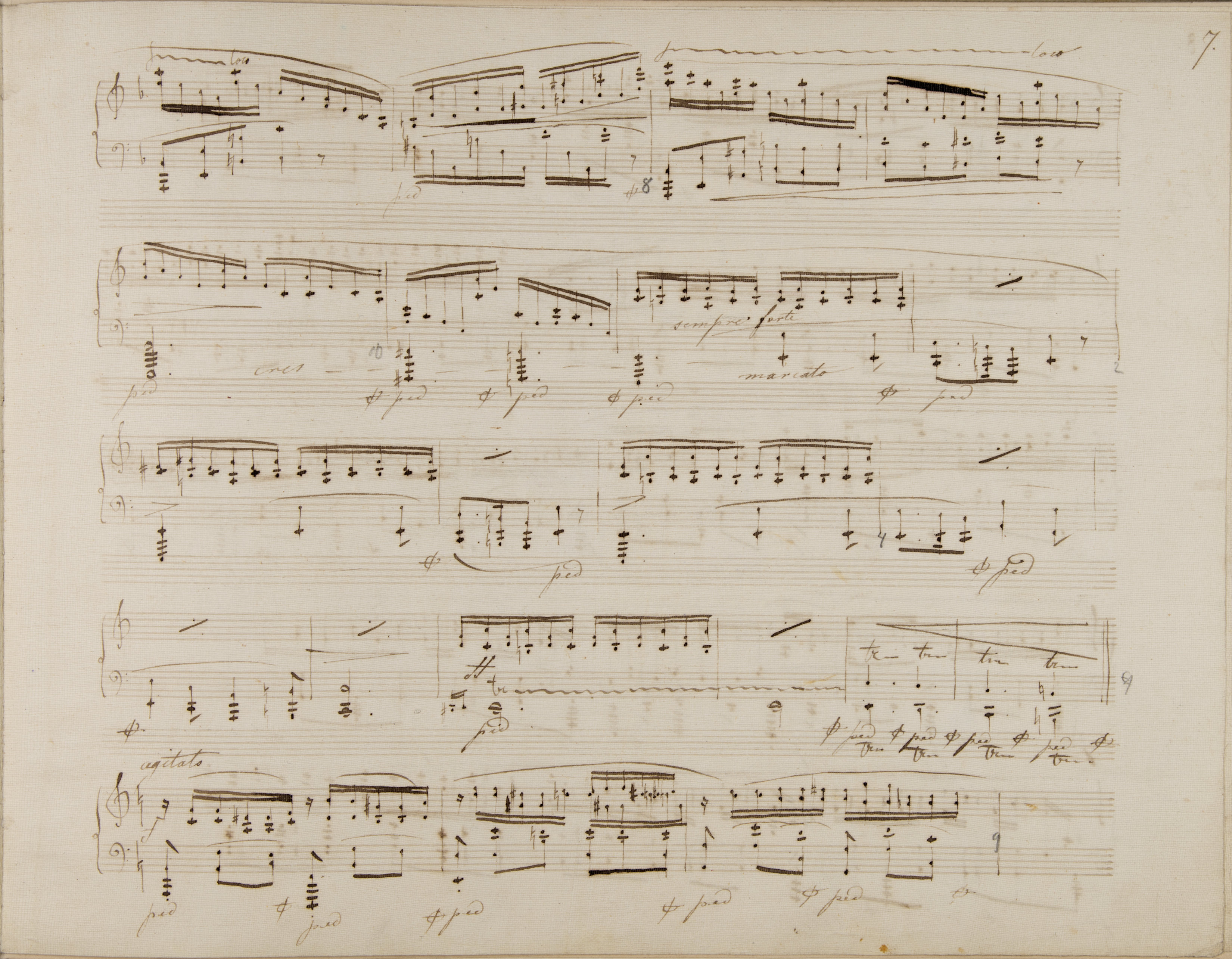



The mark in the form of a  hairpin, visible in A, posed great difficulties to the interpreters:
hairpin, visible in A, posed great difficulties to the interpreters:
- In GC (→GE), the copyist moved it above the stave; supposedly, he wanted to avoid it merging with the stave, which would hinder the interpretation. However, it distanced the mark from the minim in the L.H. and thus its significance – a half-bar-long mark in this place became just another nuance of the semiquaver figuration in the R.H.
- The engraver of FE also moved the mark from the stave; however, he kept, and even enhanced, its relationship with the L.H. part. However, shifting the hairpin to the right and dragging it to the end of the bar deprived it of its direct relationship with the G1-G octave, which can be observed in A.
- In EE, the mark was slightly shortened, which could have enhanced its relationship with the minim if it had not been for the vertical shift.
According to us, beginning the mark clearly before the minim and placing it on its stem means that it is a long accent, written in a manner underlining the unexpected length of this note – such a long rhythmic value has not yet appeared in both Presto con fuoco fragments.
Compare the passage in the sources »
category imprint: Differences between sources
issues: Unclear hairpins in A
notation: Articulation, Accents, Hairpins






